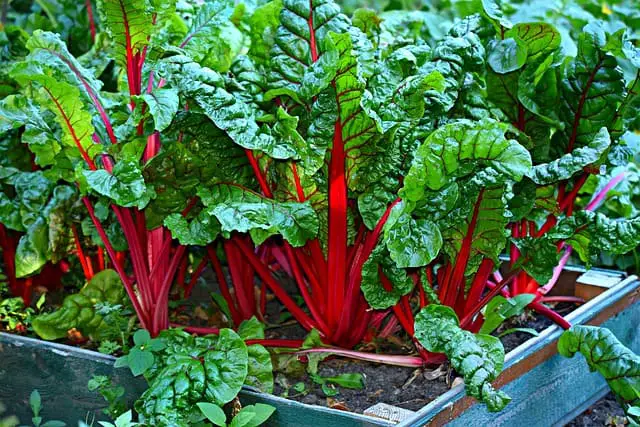One of the smartest things you can do (regardless of how green your thumb is) as a gardener is to learn the ins and outs of companion planting.
Putting plant “friends” next to one another – the right plants, anyway – cannot only dramatically increase your harvest output, but can provide all the plants in that stretch of your garden a whole host of big benefits, too.
Swiss chard is a fantastic companion plant. It offers protection against pests and insect infection, but also against bacterial and fungal infections, too. The right companions (carefully chosen) can benefit the flavor and hardiness of your Swiss chard, too.
In this article, we’ll explore the top 10 Swiss chard companion plants, including vegetables, herbs, and flowers that will help your Swiss chard thrive and provide a bountiful harvest.
Let’s take it a little deeper, shall we?
Top 10 Swiss Chard Companion Plants
Also read:
1. Brussel Sprouts
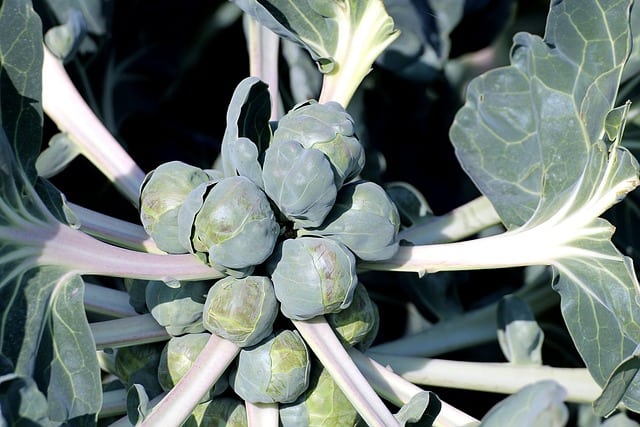
Though Brussel sprouts probably aren’t the very first companion plant you think of when getting ready to plan out your Swiss chard garden, they are easily one of the better companion plants you can nestle in nicely amongst your Swiss chard crop.
For one thing, Brussel sprouts offer incredible protection against mealworms as well as caterpillars – two insects that can completely wreck a Swiss chard harvest faster than you ever would have thought possible.
Secondly, these plants do a great job of knocking out aphids and other harmful insects that would eat away at the fresh, sweet, spicy leaves of your Swiss chard right around harvest time.
If you’re going to go with a single companion plant, Brussel sprouts need to be near the top of the list!
2. Cabbage
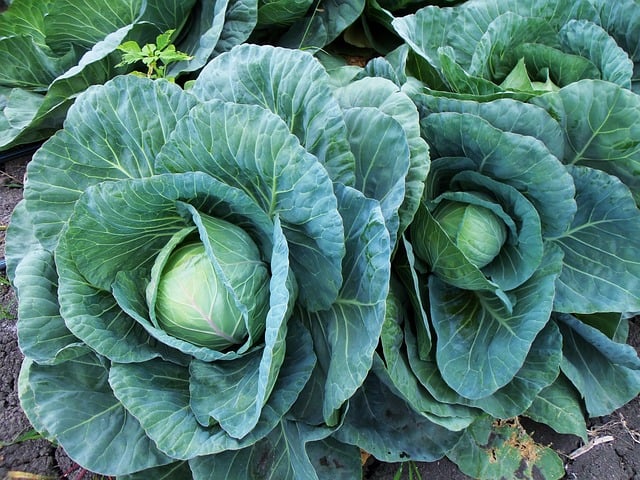
Any cabbage from the cabbage family will deliver a whole bunch of big benefits to your Swiss chard, including natural protection against the kinds of pests that would otherwise decimate these leafy green vegetables.
Cabbage can also help to retain moisture in the soil for Swiss chard, helping them both grow faster while producing better tasting leaves, too.
Best of all, you don’t have to plant cabbage right up tight against your Swiss chard for it to reap the rewards of these companion plant benefits, either. As long as they are reasonably close to one another – close enough for pollinators to bounce from cabbage to Swiss chard and back again – you should be good to go.
3. Collards

While picking companion plants from the same plant “family” can sometimes make things worse as opposed to making things better, collards are a fantastic partner to pair up with your Swiss chard.
Though collards aren’t going to offer the same kind of pest protection that other companions (like garlic, onions, and even Brussels sprouts can offer), they do work well to sort of lure in pests that would’ve wrecked your Swiss chard while remaining resilient to those kinds of attacks.
Another benefit of collards is that they improve ground coverage, keeping the soil shaded and moist (particularly during hot and dry weather). That’s only going to help your leafy greens like Swiss chard stay hydrated.
4. Garlic
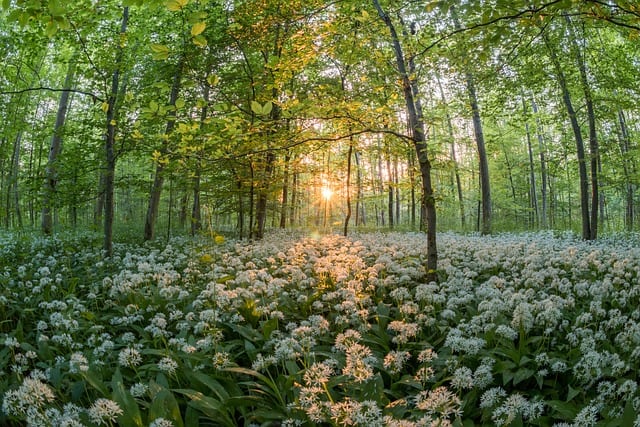
Few things are as easy to grow (or as delicious) as fresh garlic. And it’s one of the best companion plants you can think about putting amongst your Swiss chard in the garden.
The potent aromas and oils that garlic puts out are going to act as a natural “bug spray” that insects will shy away from. Planting garlic close to your Swiss chard (or even in amongst your Swiss chard) provides the biggest benefits.
Garlic also helps to protect against harmful bacterial and fungal infections that could have done a number on your leafy green vegetables.
5. Kohlrabi
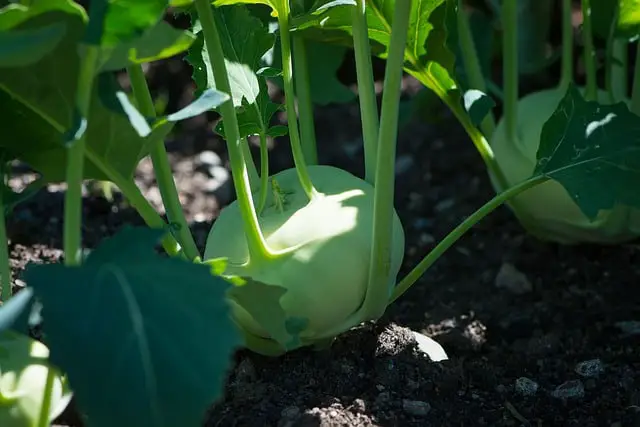
This is a fantastic partner and companion plant for your Swiss chard, not only offering protection against pests and insects that would wipe out your Swiss chard crop but also acting as a bit of a natural trellis for your leafy green vegetables, too.
Kohlrabi is strong, hardy, and quite a bit stiffer than Swiss chard. Those delicate leafy greens can reach out to this plant and get support as they mature without you having to install a bunch of trellis support for them on your own.
6. Marigolds

It might sound a little funky to mix flowers in amongst your vegetable garden, but marigolds are an absolute game changer. These are a perfect companion plant for Swiss chard and a whole bunch of other vegetables, too.
These red, yellow, and orange beauties are going to offer protection against beetles and other insects that would have eaten your young Swiss chard plants and left none remaining for harvest.
On top of that, pollinators like to bounce from marigolds to the rest of your vegetables – elevating the sweetness and flavor profile of your garden produce.
7. Onions
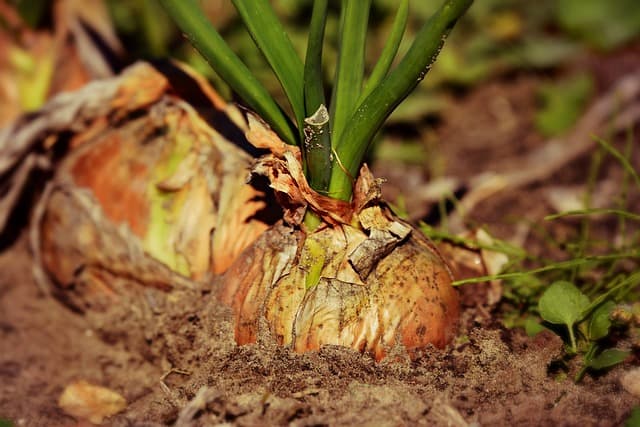
Onions (scallions, leaks, yellow or white onions, etc.) are always a smart thing to put in your garden, not just because you’ll be able to grow them easily and harvest them again and again each season but also because of the past protection they provide.
The oils and aromas that onions give off works similarly to the oils and aromas that garlic give off. Bugs that would have eaten your garden are going to be repelled by these plants, kept out of the perimeter without you having to do anything at all – or spray anything at all.
8. Peas
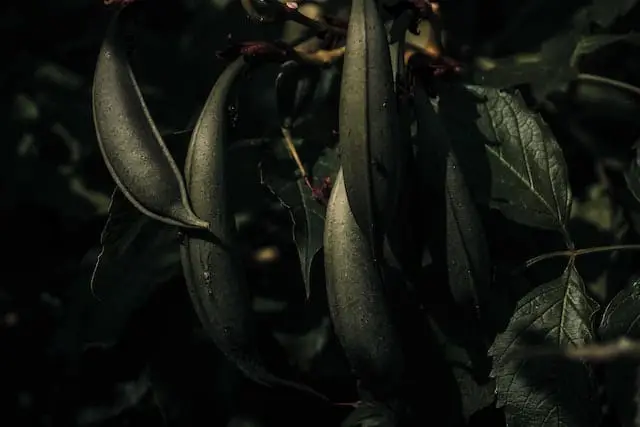
The reason that peas are such a good companion plant for Swiss chard is because they attract pollinators like few other companions can (with the sole exception of marigolds, maybe).
The more pollinators you have in your garden the fresher and more flavorful your produce is going to be. Your peas are going to be sweeter, your chard is going to be tastier, and all the other vegetables you’re growing are going to benefit from more visits from pollinators, too.
Best of all, peas don’t take up a ton of space and grow quite rapidly. You’ll have harvest after harvest of fresh peas without a lot of babysitting, all while they protect and boost your Swiss chard output.
9. Peppermint
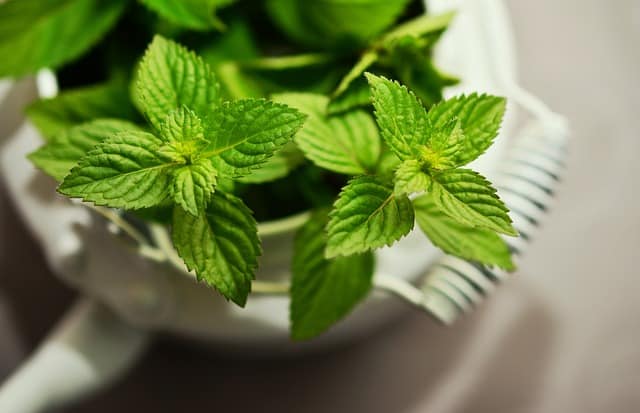
Peppermint isn’t just going to help your garden space smell fantastic (though it’ll do that in a big way).
It’s also going to help protect against insect and pest infestations – and can even drive away those furry little wild neighbors that would love nothing more than to turn your garden into the ultimate salad bar.
Peppermint protects against a lot of insects that few other companion plants protect against, too. We are talking about moths and spider mites, though you’ll also get protection from beetles and aphids as well.
10. Radish
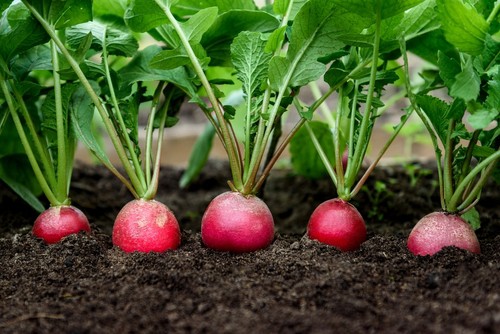
Radishes can be used as a companion plant with Swiss chard to speed up the production and maturity of those plants, helping you get another harvest of Swiss chard that you might not have been able to squeeze out otherwise.
On top of the supercharged growth cycle that radishes help with, they’ll also protect against bugs, bacterial infections, and even soil nutrient deficiencies, too. These belong in every Swiss chard garden!
Closing Thoughts
Companion planting does require a little bit of careful consideration, but not as much as a lot of newbie gardeners think.
Any of the top 10 Swiss chard companion plants we highlighted above can help you dramatically increase not just the quality of the Swiss chard you are growing, but the amount of Swiss chard you produce, too.
Take the time to plant your companion plant correctly. You’ll never grow a garden without “plant friends” next to one another again after you see how effective it is firsthand!
Frequently Asked Questions
Are there any plants I should keep away from Swiss chard?
There are some “negative” companion plants you want to keep away from Swiss chard. Spinach, tomatoes, and cucumbers can introduce higher risks of disease or bacterial infection but will also compete for the nutrients that Swiss chard needs to thrive.
When should I plant Swiss chard?
Swiss chard tastes best when it has had a couple of cold nights to sort of mellow out the flavor. That’s why a lot of people like to plant chard in the middle of July through the middle of August, guaranteeing that it’s going to get a taste of cooler weather without a ton of frost.
When will I be able to harvest my Swiss chard?
Swiss chard grows pretty rapidly (and even faster when you’ve planted companion radishes nearby). Expect your first Swiss chard harvest to happen about 10 weeks after you’ve planted these leafy vegetables, with a couple more harvests to follow before frost settles in.

Hey, I’m Lisa and I’ve been an avid gardener for over 30 years. I love writing, talking and living in the garden! Feel free to connect with me on my socials below

